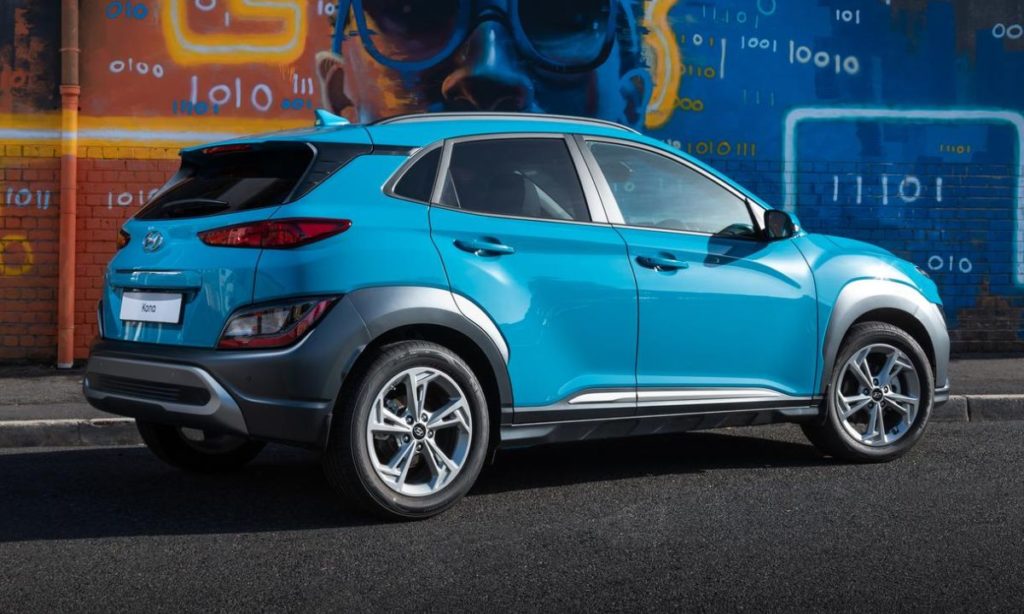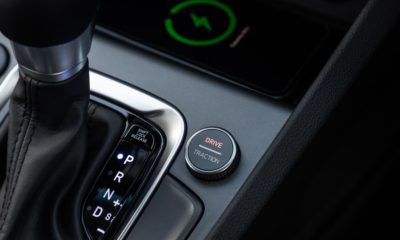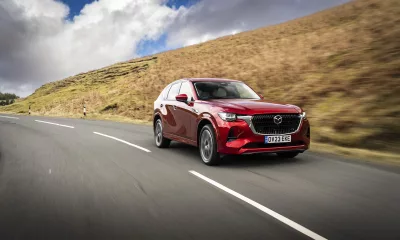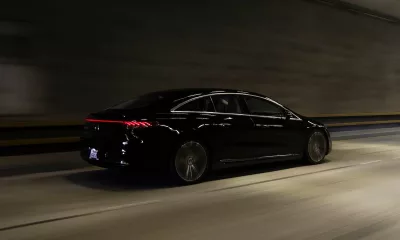It’s hard to believe that the Hyundai Kona has been on sale in South Africa for three years. We first got a glimpse of it in the metal at the 2017 Frankfurt Motor Show, and it was released the following year.
Now its time for a freshened-up version of Hyundai’s crossover, which slots between the Creta and Tuscon.

So, what’s new? The South Korean carmaker has added a new flagship 1,6-litre turbo petrol motor, sporting 146 kW and 265 N.m. Out goes the 1,0-litre forced induction mill, with the 2,0-litre naturally-aspirated engine taking over as the entry-level engine option. I had a brief drive in the latter at its launch in Cape Town this month. (We’ll get the new engine for a full road test as soon as possible).
A trio of models makes up the range before the Kona N performance flagship is launched in the first quarter of 2022. Yep, Hyundai fans can look forward to the i30 N’s high-riding sibling in a couple of month’s time. Not to be confused with the high-performance model, at R579 000 the Kona N Line is a specification package crammed with all the goodies that you’d expect from a crossover that costs well north of half a million rand.

Across the range, the updated Kona’s edgier front-end demands attention, sporting a larger, broader grille, split headlights, LED daytime driving lights and a light grey bumper in the lower section. At the rear, the bumper too sports a light grey hue and has been widened. If the Kona’s pre-facelift styling was splitting, then the 2021 model could cause an even wider rift.
For those who place importance on tech and kit, the Executive model I drove is fitted with a plethora of features. In comparison to its predecessor, Electronic Stability Control and automatic climate control is standard across the range. Other noticeable features on the Executive model include cruise control, heated electric mirrors, auto halogen headlights, black artificial leather seat trim, wireless charging, 8-inch touchscreen infotainment system (Apple CarPlay and Android Auto functionality included), rear park assist with reverse camera, 18-inch alloy wheels, front and side airbags, and a tyre pressure monitor. That’s a pretty impressive list of standard kit. From a convenience point of view, the rear seats fold in a 60:40 configuration and all three seats feature three-pointed seat belts, Isofix fixtures are standard too.

In and amongst Cape Town afternoon traffic, the Kona’s CVT played its part in the background without too much fuss. However, the moment I switched the configurable drive modes (Eco, Comfort, Smart) toggle to Sport and mashed the throttle, in true CVT form, it droned like England fans losing a football final. It is, however, something we’ve come to expect from CVTs.
Switching off the N1 and through the bustling city streets towards twistier asphalt along the Atlantic seaboard, the Kona’s steering feels rather weighty, if somewhat artificially so. There’s a confidence-inspiring amount of grip through the front axle and we’re keen to test the performance of the new 1,6-litre engine. The 2,0-litre engine offers admirable punch when overtaking and paired with the CVT conveys a relaxed driving style. It’s clear from driving this derivative that the chassis can handle a lot more power, and it’ll interesting to get a feel for that once we drive the 1,6-litre and N versions.

For peace of mind, the range is sold with a seven-year or 200 000 km mechanical warranty and a five-year or 75 000 km service plan. Perhaps the clincher for the Kona is that this Executive model is only R5 000 dearer than the pre-facelift, yet includes a lot more kit than previously.
The Korean brand has built up a solid following with its vast range of crossovers and SUVs, from the Venue to the Sante Fe it has a player in every niche. Since its launch in 2018, only 1699 Konas have found homes. For the updated model, it faces competition from the Mazda CX-30, Volkswagen T-Roc, and Audi Q2.
The Korean has a trick up its sleeve, it offers a comprehensive list of standard equipment compared to its Germanic and Japanese rivals. Initial impressions are good, and definitely an improved product over the model we drove three years ago.
FAST FACTS
Model: Hyundai Kona 2,0 Executive IVT
Price:R449 900
Engine:2,0-litre, 4-cylinder petrol
Power:110 kW @ 6 200 r/min
Torque:180 Nm @ 4 500 r/min
0-100 km/h:10,78 seconds
Top Speed:194 km/h
Fuel Consumption:8,6 L/100km
CO2:166 g/km
Transmission: CVT










